Virtual museums in Mexico that you can visit right now
Today, thanks to the internet and technology, we can visit several important virtual museums throughout Mexico without leaving home.

Currently, thanks to the internet and technology, we can visit various important virtual museums throughout Mexico without the need to leave our homes. Museums are an important tool in the process of the democratization of knowledge, culture, and art since they contribute to cultural exchange thanks to their valuable exhibitions, pedagogical work, closeness, and direct interpellation that these tasks have with visitors.
This can favor the understanding and knowledge of various cultural, political, and artistic aspects that develop in different societies that at first sight may seem foreign to us. The role of museums not only focuses on conservation and research but through their tasks of exhibition and communication contribute to the transformation of reality of the communities, they establish a permanent dialogue about what society was, is and It may be in the future.

Museum of the Palace of Fine Arts
It was inaugurated in 1934 with the name of the Museum of Plastic Arts, it is considered the first museum in Mexico Currently, the Museum of the Palace of Fine Arts permanently exhibits 17 mural works by Diego Rivera, Manuel Rodríguez Lozano, Roberto Montenegro, David Alfaro Siqueiros, Rufino Tamayo, and Jorge González Camarena dating from 1928 to 1963; It also has a large program of temporary exhibitions and various activities for all audiences
https://www.inba.gob.mx/sitios/recorridos-virtuales/museo-palacio-bellas-artes/
Museum of Modern Art
It was founded in 1964 on the initiative of President Adolfo López Mateos with the aim of preserving and disseminating Mexican art from the 1930s. The Museum has 4 rooms and three galleries, and among its collection are pieces by artists such as Frida. Kahlo, David Alfaro Siqueiros, Emir Jair, Roberto Montenegro, José Clemente Orozco, Louis Henri Jean Charlot, Juan Soriano, Juan O'Gorman, Diego Rivera, among others.
https://www.inba.gob.mx/sitios/recorridos-virtuales/museo-de-arte-moderno/
Mayan People's Museum
Located in the middle of the jungle, this museum was built with the goal of showing the development of the Mayan culture from pre-Hispanic times to the present. The building, designed by the architect Fernando González Gortázar, was conceived as a disjointed set among the jungle that has respect for nature as the axis of its design. It is conformed by four rooms: Pergola of the monoliths, Mayan Archeology, History, and Solar Mayan. The museum exhibits monolithic prehispanic sculptures of Yucatan, Campeche, and Quintana Roo, as well as ceramic and architectural elements that give an account of the history and worldview of this town.
https://www.inah.gob.mx/paseos/MuseodelPuebloMaya/tour.html
Museum of North Cultures
In 1996, this enclosure, designed by the architect Mario Shetjnan, opened its doors to show its collection, which houses one of the most beautiful archaeological collections of Ancient Mexico. This collection was recovered from the excavations of Paquimé and other archaeological sites of the region known as the Great Chichimeca (North of Mexico and Southwest of the United States). The museum, located in Chihuahua, was declared a Cultural Heritage of Humanity by UNESCO in 1998 because it preserves unique pieces of its kind.
https://www.inah.gob.mx/paseos/MuseodelasCulturasdelNorte/tour.html
Templo Mayor Museum
It was inaugurated in 1987 to expose the vestiges of the Mexica culture from pre-Hispanic to colonial times. The museum houses more than 14,000 objects found in excavations carried out between 1978 and 1982 on the site where the main temple of the Mexica people was located. The museum has 8 rooms that exhibit objects from more than 110 offerings discovered in the temple; two of the rooms are dedicated specifically to Tlaloc and Huitzilopochtli, deities to which the Templo Mayor was dedicated.
https://www.inah.gob.mx/paseos/templomayor/
National Museum of Anthropology of Mexico
The National Museum of Anthropology in Mexico is one of the most important anthropological museums in the Americas. It has a very important cultural work since it houses archaeological pieces from all the peoples of Mesoamerica. The objects that form the collection are a testimony of the ethnic diversity of the country. The museum's art and archaeological remains highlight various aspects of Mexico's indigenous cultures. It is the type of museum that seeks to recover part of the history and culture of a country. The indigenous peoples are the protagonists of the collection, which aims to restore importance to the cultures that existed before the European invasion.
https://artsandculture.google.com/partner/museo-nacional-de-antropologia-mexico
Frida Kahlo Museum
This museum is popularly known as the Blue House and is dedicated to Mexican artist Frida Kahlo. The building in which this museum has been established is the house in which the artist lived for most of her life and has been preserved as it was then. Of course, the most striking pieces in the collection are the paintings painted by Kahlo herself. But this is by no means the only thing you will see in the Blue House. The artist had her own art collection, and this is part of the museum's permanent exhibition. And there are also objects on display that Kahlo used in her day-to-day life. The museum has a photography exhibition (another of the artist's hobbies), samples of clothing, and orthopedic appliances that Kahlo herself used,... There is also a set of pre-Hispanic sculptures that the Mexican painter collected throughout her life due to her interest in the culture of her country.
https://artsandculture.google.com/partner/museo-frida-kahlo
Will Mexico's Child Protection Laws Make a Difference?
Mexico's LXV Legislature champions children's rights. New laws tackle abuse, discrimination, and ensure justice for young victims. A surprising shift in priorities.
How Metallurgy and Mysticism Birthed Chemistry
Chemistry's origins lie in ancient crafts like metallurgy and Egyptian arts. Alchemy emerged in Alexandria, blending practical knowledge with Greek philosophy. Alchemists sought to transmute metals and create elixirs, developing symbolic language and potent acids.
Can Mexico Save its Forest Legacy?
Mexico's forests hold immense biodiversity but suffer from neglect and illegal logging. Dr. Piñero Dalmau urges for science-backed policy that allows communities to sustainably benefit from forests, ensuring their health for future generations.
Shepherds, Devils, and the Birth of a Pastorelas Tradition
Mexican pastorelas are a unique Christmas tradition blending pre-Hispanic prophecy and Spanish religious theater. Shepherds journey to worship the Christ Child, facing temptations from mischievous devils along the way. Despite near-extinction, the tradition was revived and now thrives.
The Mexican Museum San Francisco, United States
The soul and spirit of the arts and cultures of Mexico and the Americas are fundamentally linked. Through its programs, The Mexican Museum voices the complexity and richness of Latino art throughout the Americas, encouraging dialogue among the broadest public.
The Mexican Museum, initially located in the heart of San Francisco's Mission District, was founded in 1975 by San Francisco resident and artist Peter Rodríguez. The museum was the realization of Mr. Rodríguez's vision that an institution be created in the United States to exhibit the aesthetic expression of the Mexican and Mexican-American people. Today, our vision has expanded to reflect the evolving scope of the Mexican, Chicano, and Latino experience.
In 1982 The Mexican Museum moved to Fort Mason Center in San Francisco's Marina District, where it has amassed a permanent collection of over 16,000 art objects. This spectacular collection is unique in the nation and includes Pre-Hispanic, Colonial, Popular, Modern and Contemporary Mexican and Latino, and Chicano Art.
The museum is currently preparing for the completion of our permanent home which will be built in downtown San Francisco's Yerba Buena Arts District. The museum continues to offer educational and public programming throughout the San Francisco Bay Area.
Virtual Tour of The Mexican Museum
The mexican museum, selections from the mexican museum's permanent collection, in this collection, united states, 1 museum view.

Hispanic and Latinx Heritage Month: Virtual Tours
- African History
- Latin America
- Native American Studies
- World Religions
- Contemporary Issues
- Special Collections
- Journals and Magazines
- Infographics
Virtual Tours
- Country Profiles
- Latin American History
- Mesoamerican Religions
- Latin American Popular Culture
- African Religions
- Latinx This link opens in a new window
- African American Studies This link opens in a new window
- Caribbean Studies This link opens in a new window
- Latin American Studies This link opens in a new window
- Diversity, Equity, Inclusion (DEI) and Multicultural Resources This link opens in a new window
- African History This link opens in a new window
- Christianity This link opens in a new window
- Cinco de Mayo This link opens in a new window
- Primary Sources (United States History) This link opens in a new window
- Texas This link opens in a new window
- Queer Studies This link opens in a new window
- Globalization This link opens in a new window
- Statistical Data This link opens in a new window
- Want to Contribute?
- Citing Your Sources This link opens in a new window
- Library Resources and Services This link opens in a new window
- Software in the Library
- Icons & Heroes
- Art & Entertainment
- Heritage Sites
- History & Traditions
- Latino Communities Today
The shining stars of the Latino community.
- 10 Inspiring Latinas Who've Made History From astronauts to artists, meet the Latinas who’ve shaped the U.S. today “People think of Latina women as being fiery and fierce, which is usually true”, says Zoe Saldaña, “but I think the quality that so many Latinas possess is strength.” From Selena to Sylvia Rivera, Latinas have shown their strength, fortitude and skill in every discipline and field, including science, the arts, law, and politics. Here we take a look at a handful of the inspiring Latinas who have made history, shaped the society we live in, and changed our world for the better. more... less... Ellen Ochoa, Joan Baez, Dolores Huerta, Selena, Sylvia Rivera, Ana Mendieta, Ileana Ros-lehtinen, Julia Garcia, Maria Elena Salinas, Sonia Sotomayor
- From Colonial Fighters to Modern Activists This portrait links modern civil rights leaders Dolores Huerta and César Chávez to historic figures Emiliano Zapata, Miguel Hidalgo, and José María Morelos, who shared their Mexican heritage and a commitment to justice.
- Latino Icons Latino icons are all around us. Latino USA takes a look at these icons and their lasting legacies. more... less... Lin-Manuel Miranda, Ellen Ochoa, Dolores Huerta, Rita Moreno, Sonia Sotomayor, Julio Rivera, Sandra Cisneros, John Fife, Diane Guerrero, Cecilia Lopez, Candido Camero, A.J. Mendez Brooke, Catherine Cotez Masto, Esmeralda Santiago, Jose Diaz-Balart, Laurie Hernandez, Sonia Manzano, Mondo Guerra.
Painting, sculpture and performance arts.
- Ballet Hispanico For fifty years Ballet Hispánico has been the leading voice intersecting artistic excellence and advocacy, and is now the largest Latinx cultural organization in the United States and one of America’s Cultural Treasures.
- Dance Performances at the National Hispanic Cultural Center The NHCC regularly presents performances by nationally and internationally acclaimed local flamenco companies. The Center also brings in dance companies from elsewhere in the U.S. and the world, with performances in genres ranging from ballet to contemporary to folkloric.
- Latino Music Figures Prominent Latino musicians in the U.S. and in Latin America. Gaby Moreno, Calle 13, Kumbia Queers, Xenia Rubinos, Ileana Cabra, Downtown Boys, Nicola Cruz, IFE (Otura Mun), Natalia Lafourcade.
- Latinos in News and Entertainment The Interviews: An Oral History of Television celebrates the contributions of Latinos to the news and entertainment industries with Hector Elizondo, Sonia Manzano, Jorge Ramos, Ricardo Montalban, Rita Moreno, Edward James Olmos, Mario Kreutzberger, and Maria Elena Salinas
- Alhambra Palace, Granada Its palaces and gardens are famous throughout the world. It is one of Spain’s most important cultural attractions. more... less... Use Google Translator or other tool to translate from Spanish to English
- National Park Service Hispanic Heritage Sites here are over 50 National Park Service sites that have Hispanic connections. Explore 20 of these sites in this exhibit. more... less... San Cristobal, Cabrillo National Monument, Castillo de San Marcos, Cesar Chavez Monument, Chamizal memorial, Coronado, Dry Tortugas, El Morro, Fort Matanzas, Fort Union, Hubbell Trading post, Old Spanish Trial, Palo Alto Battlefield, Pecos Park, Presidio of San Francisco, Salinas Pueblo Missions, San Antonio Missions, San Juan, Timucuan Preserve, Tumacacori Park,
- Honduras: The Ruins of Copan Copán, another extensively preserved example of Mayan civilization. Copán’s hieroglyphic staircase is particularly interesting. It’s 62 steps high and is the longest known Mayan hieroglyphic text. There are 2200 glyphs (or symbols) sculpted into the steps!
From ancient cities to Spanish colonization.
- California's Missions From 1769 to 1835, Franciscan missions dominated the economic and spiritual fabric of Spanish and Mexican California. The Franciscan friars established twenty-one missions in what would become the Golden State, starting in San Diego and continuing along the coast to Sonoma, forty miles north of San Francisco. These missions served as one part of a three-pronged effort by the Spanish government to settle and control Alta California (including what is now the state of California). Along with military presidios (forts) and civilian pueblos (towns), the missions were Crown-sanctioned institutions designed to bring Western civilization to what they viewed as the wild frontier.
- Central America's Past Revealed Centroamericanos—they are the backbone of the Latino communities surrounding Washington, D.C., the Smithsonian’s own backyard. They hail from El Salvador, Guatemala, Honduras, Nicaragua, Belize, Panama, and Costa Rica. A number of cultures occupied each region. These regions are today part of Belize, Guatemala, Honduras, El Salvador, Nicaragua, Costa Rica, and Panama.
- Colonial Mexico A common Mexican trait on either side of the U.S.–Mexico border is the passionate interest in Mexicanidad (Mexicanness) and what comprises Mexican identity. Perhaps this obsession to understand the concept of Mexicanidad comes from nearly five centuries of mestizaje – the interracial and cultural mixing that first occurred in Mesoamerica among Native Indigenous groups, European Spanish and enslaved Africans during the 1520s. By the 18th century, Mexican identity had developed. Mestizaje was the process that constructed it. The museum’s permanent collection showcases the dynamic and distinct Mexican stories in North America, and sheds light on why Mexican identity cannot be regarded as singular; its vast diversity defies any notion of one linear history.
- Teotihuacan: City of Water, City of Fire In the first half of the first millennium, Teotihuacan, located in the Valley of Mexico, was the cultural, political, economic, and religious center of ancient Mesoamerica. The art and architecture its citizens left behind have been objects of fascination at least since the time of the Aztecs and continue to be admired and studied by scholars and visitors from around the world.
- A Year in the Life of a Spanish Colonial Pueblo: San José de Guadalupe in 1809 Official correspondence from the Spanish-Mexican Records of the Pueblo de San José de Guadalupe.
The modern Latino experience. Learn more about the communities of the present
- Detroit's Lowrider Culture Spring is a special time of year on Detroit's Southwest side, known as Mexicantown. Ther's teh Blessing of the lowriders. The aesthetic, often associated in pop culture with old school West Coast gangster rap videos wasn't exactly embraced by residents. Among the early national car clubs to make their way to Detroit was the Majestics, an outfit that got its start in the LA suburb of Norwalk in 1963.
- Hispanic Heritage Foundation Identifies, Inspires, Prepares and Positions Latino Leaders. Established by the White House in 1987. The Hispanic Heritage Awards were established in 1987 by President Ronald Reagan to commemorate the creation of Hispanic Heritage Month in America. Since that time, the Hispanic Heritage Awards are considered among the highest honors for Hispanics by Hispanics. Top Latino performers and personalities will pay tribute to the Honorees from the stage. The Awards are unique in that celebrities take the stage along with educators, innovators, community and business leaders, elected officials, and others.
- Influential People and Moments in Latino History in the US This exhibit presents videos that recognize and shed light on people and events that have influenced Hispanic culture in America.
- Intangible Heritage Spanish, one of the languages derived from Latin, has become established in America and it has become the second language of the western world after English. Spain and its missionaries introduced the Catholic religion, which predominates in the Hispanic world. The missionaries likewise used the religious calendar intensively as a way to attract the Indians. The Native Americans celebrated holidays such as Saint Isidore, Christmas and Easter and even today there are indigenous communities located mainly in Arizona, New Mexico and Texas, who celebrate religious festivities such as the Three Kings. In San Antonio on every Good Friday for the past 250 years a Passion Play recreating the crucifixion of Jesus Christ has been represented. Fiestas were the main motivation for social and family gatherings. Fiestas generally coincided with religious celebrations or significant dates in the agricultural and/or herding calendar.
- Art Museum of the Americas AMA AMA | Art Museum of the Americas is the oldest museum of modern and contemporary Latin American and Caribbean art in the United States. It is part of the Organization of American States (OAS), an international public organization whose aim is to promote democracy, peace, justice, and solidarity among its 35 member countries.

- Museum of Fine Arts Houston MFAH Established in 1900, the MFAH is the largest cultural institution in the region. The majority of the museum's presentations take place on its main campus, which is located in the heart of Houston's Museum District and comprises the Audrey Jones Beck Building, the Caroline Wiess Law Building, the Glassell School of Art and the Lillie and Hugh Roy Cullen Sculpture Garden. The Beck and Law buildings are connected underground by the Wilson Tunnel, which features James Turrell's iconic installation The Light Inside (1999). Additional resources include a repertory cinema, two significant libraries, public archives and a state-of-the-art conservation and storage facility. Nearby, two remarkable house museums, Bayou Bend Collection and Gardens and Rienzi, present collections of American and European decorative arts. The encyclopedic collections of the MFAH are especially strong in pre-Columbian and African gold; Renaissance and Baroque painting and sculpture; 19th- and 20th-century art; photography; and Latin American art. The MFAH is also home to the International Center for the Arts of the Americas (ICAA), a leading research institute for 20th-century Latin American and Latino art.

- National Museum of the American Latino The Smithsonian is building the National Museum of the American Latino to recognize the accomplishments, history, and culture of the Latino communities. Take a virtual tour of the Molina Family Latino Gallery.
- Prado Museum From The Hutchinson Unabridged Encyclopedia Spanish art gallery containing the national collection of pictures. The building was designed as a natural history museum and begun in 1785; it became an art gallery in 1818 under Ferdinand VII.
- << Previous: Infographics
- Next: Topics >>
- Last Updated: Mar 7, 2024 12:09 PM
- URL: https://iot.libguides.com/latino_heritage_month
You are using an outdated browser. Please upgrade your browser or activate Google Chrome Frame to improve your experience.

Enjoy videos from our blockbuster exhibition, Tesoros de la Hispanic Society, and learn about our history and iconic works. A voyage of Discovery: Hispanic Society Museum & Library History of the the Hispanic Society Museum & Library Exhibition: Treasures from the Hispanic Society Museum & Library Installation of the Exhibition “Tesoros de la Hispanic Society”..

To book a visit, please send an email to [email protected]

Explore highlights of Hispanic Society’s history, works on view, special exhibitions, and the Audubon Terrace variety of tours with Museum educators every Friday and Saturday at 2:00 p.m. Space is limited. Please register here
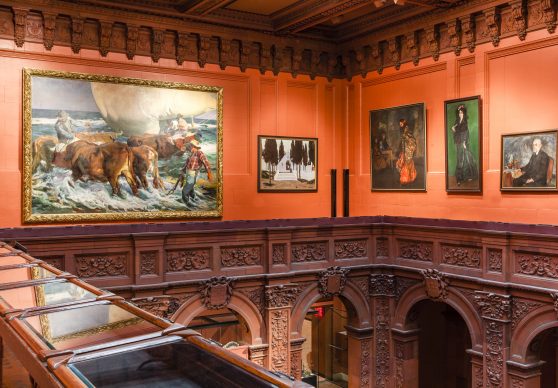
Main Court Sorolla Vision of Spain Gallery Spanish Colonial Art Gallery Library Reading Room Upper Foyer Mezzanine Paintings Gallery Metalworks Gallery Ceramics Gallery Terrace Sculpture Library Prints and Photographs
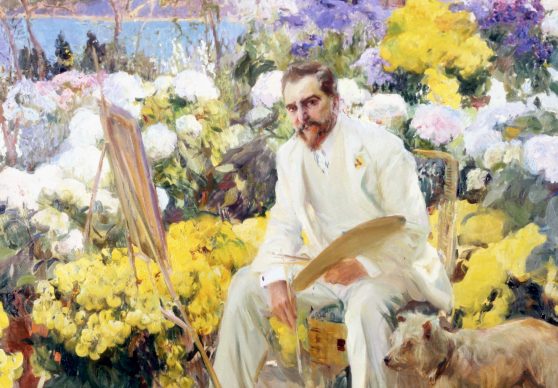
The Hispanic Society Museum & Library Broadway between 155th and 156th Streets New York, NY 10032
Admission is free to the Museum, Library Reading Room, and all special exhibitions at The Hispanic Society

¡Bienvenidos! Welcome!
We are delighted to welcome you to the online community of the Smithsonian’s National Museum of the American Latino. Your voice is part of our community . Be on the lookout for the latest news, innovative programs, and exciting opportunities for you to be part of.
You’ll hear more from us soon. In the meantime, explore the museum’s inaugural exhibition, "¡Presente! A Latino History of the United States", online in three ways: take a virtual tour, explore key themes, or use an interactive map to learn more about the features in the Molina Family Latino Gallery. You can also follow us @USLatinoMuseum on Instagram for behind-the-scenes stories!
We’re glad to have you on this journey with us!

Online Exhibitions
Virtual Expresiones de México, Arte de la Gente
After the Mexican Revolution ended in 1920 the Mexican government made efforts to rebuild, modernize, and globalize the nation.
Virtual Chicano/a Art, Movimiento y Más en Austen, Tejas 1960s to 1980s
This exhibition features artwork from Mexic-Arte’s permanent collection and loans highlighting the rich and under told history of the Chicano Art movement in Austin from the 1960s to the 1980s.
MX 21- Resistance, Reaffirmation & Resilience
Throughout 2021, Mexico is observing major events in history: the falling of the Aztec capital Tenochtitlán, the invasion by Spain, and the Independence of Mexico. Mexic-Arte Museum presents an exhibition and programs in conjunction with Mexico’s 2021 events.

Take a Hispanic Virtual Field Trip Around the World!
If you want to take your students on a Hispanic virtual field trip around the world, go no further than the list below. There’s one major landmark per Spanish-speaking country with enough awe-inspiring sights to celebrate Hispanic pride at any time of year.
There are waterfalls, volcanos, colonial cities, and ancient ruins amongst these natural and manmade wonders. You can use the videos or websites I’ve found as a starting off point for your Hispanic virtual field trip around the world. Or you can use the list for students to explore on their own.
These make for a perfect around-the-world virtual field trip to every Hispanic country from the comfort of your classroom or living room.
¡Buen viaje!
Hispanic Virtual Field Trips

Iguazú Falls
Kick-off your Hispanic virtual field trip with Iguazú Falls, right on the border of Argentina and Brazil. It’s a series of over 200 waterfalls making it one of the widest waterfalls in the world. In fact, they are double the size of Niagara Falls. It’s an important landmark for the cities of Puerto Iguazú in Argentina and Foz de Iguazu in Brazil, though the majority of waterfalls are on the Argentinian side.
Salar de Uyuni
Next up is the largest salt flat in the world. It can be found in Bolivia and it’s called the Salar de Uyuni. The barren landscape is so surreal that it’s been used as a filming location for several movies including Star Wars: The Last Jedi . Adding to it’s out of this world vibe, the flats turn into a giant mirror after it rains when a thin layer of water collects on the ground.
Cerro San Cristóbal
Moving on to Chile, Cerro San Cristóbal houses the Parque Metropolitano, one of the largest urban parks in the world. This “hill’’ that overlooks the city of Santiago boasts a long list of amenities and activities for residents and tourists. There’s a cable car, a funicular, a zoo, two public pools, Japanese gardens, and plenty to see and do.
Walled City of Cartagena
Then, spend some time in the heart of a vibrant Hispanic city -Cartagena de Indias, Colombia. Students can enjoy a virtual tour of the walled city of Cartagena . The colonial city sits on the Caribbean Sea and was an important trade port along with Havana, Cuba, and San Juan, Puerto Rico. The walls and the city are beautiful to see in person (or online!).
Let’s head straight to one of Costa Rica’s most active volcanos, Volcán Arenal. Until 2010 it was actively spewing lava, but suddenly stopped and went dormant. Scientists think the top layers of lava are dormant, while the bottom layers are still active. It’s considered to be a “young” volcano at over 7,000 years old.
Afterwards, students can take another quick city escape to Old Havana. The city center and vintage cars are a step back in time.
Dominican Republic
Soana island.
After spending time in the hustle and bustle of the city, it’s time to head to a deserted island. The pristine beaches of Soana Island make it a popular destination in the Dominican Republic. It certainly has a deserted island feel which has made it a perfect filming location for movies like The Pirates of the Caribbean . Originally inhibited by the Taino people and called Adamanay, it is part of the Cotubanama National Park.
Ciudad Mitad del Mundo
Meanwhile, young explorers might be interested to see where the equator lies in Ecuador. It’s located near Quito, and the area, which commemorates the equator and has several museums, is called the Ciudad Mitad del Mundo . Check out their website for more information about the equator, which separates the northern and southern hemispheres, and is what gives Ecuador its name.
El Salvador
El boquerón.
Want to check out another volcano? This one is located near the capital city of San Salvador in El Salvador. El Boquerón is an inactive volcano that people can hike to. If that’s not enough, there’s a smaller crater within El Boquerón called El Boqueroncito.
Now, heading to our first of several ancient cities is Tikal. It’s an ancient Mayan city and one of the most important complexes that showcases Mayan culture to this day. The ruins show visitors where Mayans lived, their temples, ball courts, palaces, and public squares -all located in the middle of the Guatemalan rainforest.

Equatorial Guinea
Malabo national park.
From Guatemala to Central Africa, celebrate Equatorial Guinea’s Malabo National Park. It’s Central Africa’s first complete urban park. It’s extensive, beautiful, and absolutely worth a look.
Jumping back to Central America, one of Honduras’ main attractions is Copán, another extensively preserved example of Mayan civilization. Copán’s hieroglyphic staircase is particularly interesting. It’s 62 steps high and is the longest known Mayan hieroglyphic text. There are 2200 glyphs (or symbols) sculpted into the steps!
Chichen-Itza
Meanwhile, another example of Mayan (and Toltec) culture are the ruins of Chichen-Itza. It’s thought to be one of the largest and most diverse Mayan cities and that’s reflected in the different architectural styles found throughout the complex.
Masaya Volcano National Park
Get another peek at a Central American volcano in Masaya Volcano National Park. The park contains two volcanoes, five craters, and a lava tube (a cave made from an underground stream of lava that is now empty). The Masaya Volcano is still active and spews large amounts of gas into the air. Students can watch it erupt in the video above.
Panama Canal
Started in the late 1800s by France and finished in 1914 by the US, the Panama Canal is a major engineering feat that gives ships a shortcut between the Atlantic and Pacific Oceans. Through a series of locks, water levels rise and fall allowing ships to pass through. But it still takes 8-10 hours!
Saltos del Monday
The second waterfall on the list goes to Paraguay’s Saltos del Monday. They are a set of three waterfalls located near the Triple Frontier -where Argentina, Brazil, and Paraguay meet.
Machu Picchu
We’ve seen quite a few Mayan cities on the list so far, but representing the Incas is the infamous citadel of Machu Picchu. It’s one of Peru’s most visited sites. Nestled among the mountain slopes of the Andes, the city does a spectacular job of blending in with its environment.
Puerto Rico
Bioluminescent bays.
Let’s leave ancient ruins in the past and head to the waters of Puerto Rico. Students can watch water glow in the dark in one the island’s bioluminescent bays. In fact, there are only five places around the world with glowing water just like this -and three of them are in Puerto Rico! The glow in the dark effect is caused by tiny organisms that live in the water and light up when moved.
Sagrada Familia
Next up, cross the Atlantic Ocean and dry off while exploring the Sagrada Familia. The basilica (a type of church) is one of the world’s most famous sites even though it’s still being built. Construction started in 1882 and is expected to finish in 2026.
The Fingers of Punta del Este
Our Hispanic virtual field trip around the world is almost over, but first, let’s head back to South America. Just like it sounds, one of Uruguay’s most prominent landmarks is a sculpture of a hand emerging from the sand. It was created in 1982 by a Chilean artist and goes by a few different names: Los Dedos, Hombre Emergiendo a La Vida, or The Hand .
Angel Falls
Finally, let’s wrap up the trip with our last waterfall: Angel Falls in Venezuela. It’s the tallest waterfall in the world and you’ll get vertigo from just watching the video above. The falls are named after a pilot, Jimmie Angel, who crash landed his plane there.

If your kids can’t travel in person, these Hispanic virtual field trips are the next best thing. There is so much to see, from volcanoes, to waterfalls, to ancient ruins, that your students won’t be disappointed.
Looking for more virtual field trip ideas? Head here for virtual trips to Spain , Colombia , and Peru .
Share this:.

You May Also Like

Virtual Field Trips to Spain for Kids

Black History Month Virtual Field Trips for Spanish Class

6 Authentic (and Free!) Day of the Dead Virtual Field Trips

OUR MISSION
- To create, maintain, operate, and manage an Interactive Virtual Museum which would be the repository and showcase of the history of the Hispanic-Latin American community and its accomplishments and contributions to Canada.
- To gather, curate, archive, and display Presentially, Digitally, and Virtually all elements pertaining to the presence and contributions of the Hispanic-Latin American community in Canada since the 1500s.
- To present and display in Presential, Digital, and immersive virtual formats the arts, culture, academia, science, literature, theatre, sports, entertainment, women, youth, media, news of the times, inter alia of the Hispanic-Latin American community in Canada through new media, virtual reality and other formats and platforms.
- To educate the Hispanic Latin American community in Canada and Canadians in general in Digital Humanities, an area of scholarly activity at the intersection of computing or digital technologies and the disciplines of the humanities. This includes the systematic use of digital resources in the humanities, as well as the analysis of their application as they pertain to the Hispanic-Latin American presence in and its contributions to Canada
- To encourage members of the Hispanic–Latin American community in Canada to contribute information, documents, and other material in various formats to the archives of the Museum to be stored, curated, digitized, and displayed Presentially, Digitally and in three-dimensional virtual social spaces powered by the proven and robust framework developed by the creators and developers of the FIVARS international virtual reality festival, the VRTO World Conference and lead developers behind JanusWeb .
- To solicit funds to maintain and expand the Canadian Hispanic-Latin American Virtual Museum.
will be available for download.

- A REVOLUTIONARY VIRTUAL EXPERIENCE
- Galleries 2
- Community in action
- Gallery of Honours
- We Come Bearing Gifts
- Indiegame Reviewers
- Canadian Hispanic Congress
- Current Issues
- Organizations
- Partner Sites
- The Mississauga Latin Festival
- The Panamerican Food & Music Festival
- Notable Canadian Hispanic Latin Americans
- Stories to Inspire
- Pro Empowerment of Women
- Entertainment
- Entrepreneurs
- Photography
- Professionals
- Science & Technology
- Hispanic Presence
- Waves of Immigration
- Entertainments & Media
- Folklore & Traditions
- Science and Technology
- What Did You Bring
- Heritage Languages
- Graphic Design
- Ines Di Santo
- Graphic Arts
- Handicrafts
- Musical Instruments
- Secular & Religious Sculptures
- Stained Glass
- Ceremonial Costumes

Virtual Museum Tour for Latinx/Hispanic Heritage Month
To continue our commemoration of Latinx/Hispanic Heritage Month, special guest, art historian, and educator, Valentín Concha-Núñez, will give our private school an interactive, virtual museum tour on Wednesday, October 14. We will explore “Representation of Latino Art” as Concha-Núñez presents several beautiful masterpieces created by Latinx artists across different cultures, art forms, and eras.
With a dual background in education and art history, Concha-Núñez’s approach merges lots of contextual information with an open, multi-modal learning style that works for audiences of all ages and backgrounds. Currently a museum educator at New York’s Museum of Modern Art, his main focus is, “…to ignite empowerment and civic participation to enrich communities through the arts and culture.”
Share this post
Watkinson’s mission is to develop in our private school students the power to shape their lives and the world around them..

Founded in 1881, Watkinson School is an independent, private coeducational day school for students from grades 6–PG with a legacy of leadership in progressive education.
We admit students regardless of race, color, religion, origin, or orientation.
- 180 Bloomfield Avenue, Hartford CT 06105
- (860) 236-5618
- [email protected]

- School Store
- Privacy Policy
- Watkinson Story Vault
Yes! Save me a spot.
Register for info session.
" * " indicates required fields
Tell us how to contact you.
Tell us about your student., how did you hear about watkinson.
- Student Records Login
- +91 8281 360 360
- [email protected]
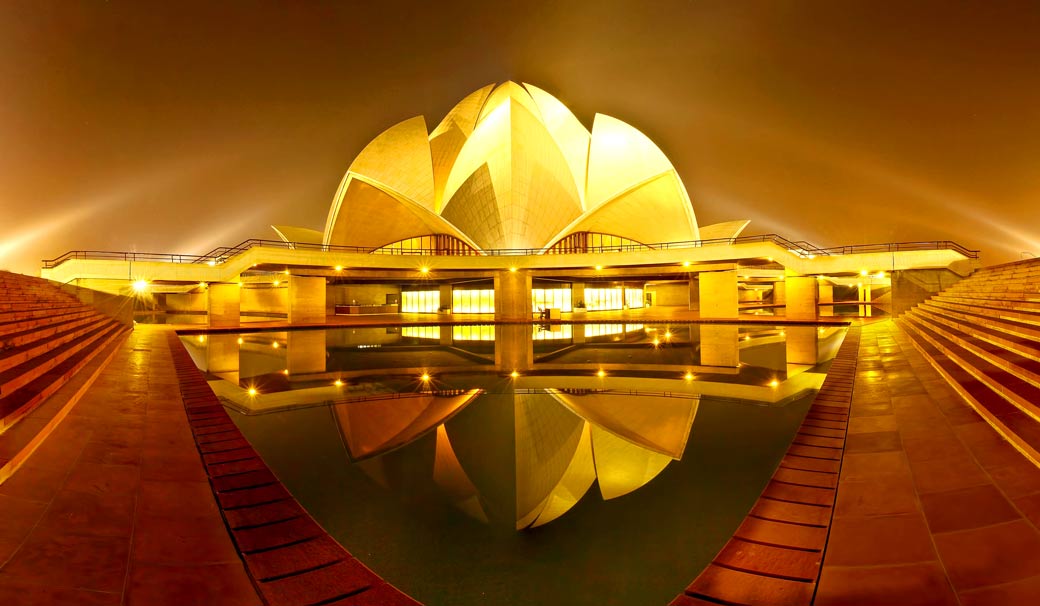
Lotus Temple, New Delhi, India
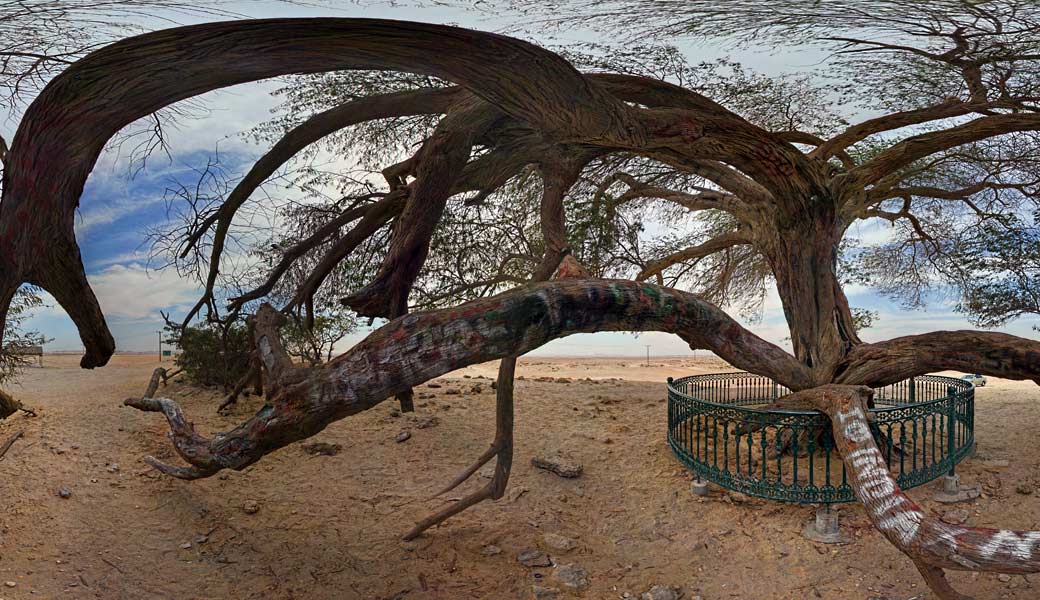
Tree of Life, Bahrain
- Website View website
Moscow city 360-degree virtual reality tour.
Take the virtual tour of the kremlin, moscow river, saint basil’s cathedral and red square.
The Moscow Kremlin usually referred to as the Kremlin, is a fortified complex at the heart of Moscow, overlooking the Moskva River to the south, Saint Basil’s Cathedral and Red Square to the east, and the Alexander Garden to the west.
It is the best known of the Kremlins (Russian citadels) and includes five palaces, four cathedrals, and the enclosing Kremlin Wall with Kremlin towers. Also within this complex is the Grand Kremlin Palace. The complex serves as the official residence of the President of the Russian Federation.
The name “Kremlin” means “fortress inside a city”, and is often also used metonymically to refer to the government of the Russian Federation in a similar sense to how “White House” is used to refer to the Executive Office of the President of the United States. It had previously been used to refer to the government of the Soviet Union (1922–1991) and its highest members (such as general secretaries, premiers, presidents, ministers, and commissars). The term “Kremlinology” refers to the study of Soviet and Russian politics.
All of Moscow’s main streets start at Red Square , so it’s easy to see why this is considered the heart of the city. A massive space of 330 meters by 70 meters, the square is flanked by the Kremlin, Lenin’s Mausoleum, two cathedrals, and the State Historical Museum. In 1945, a massive Victory Parade was held here to celebrate the defeat of Nazi Germany by the Soviet Armed Forces.
St. Basil’s Cathedral , one of the most recognizable buildings on the square, was built in 1555. The unique cathedral has architectural details inspired by Byzantine and Asian designs, as well as details that resemble those found in famous mosques. There are nine individual chapels inside the church, all decorated with colourful mural art.
Yuri Gagarin Is the First Man in Space. Yuri Alekseyevich Gagarin was a Soviet pilot and cosmonaut. He was the first human to journey into outer space, when his Vostok spacecraft completed an orbit of the Earth on 12 April 1961
Created by Leen Thobias P4Panorama
Related posts
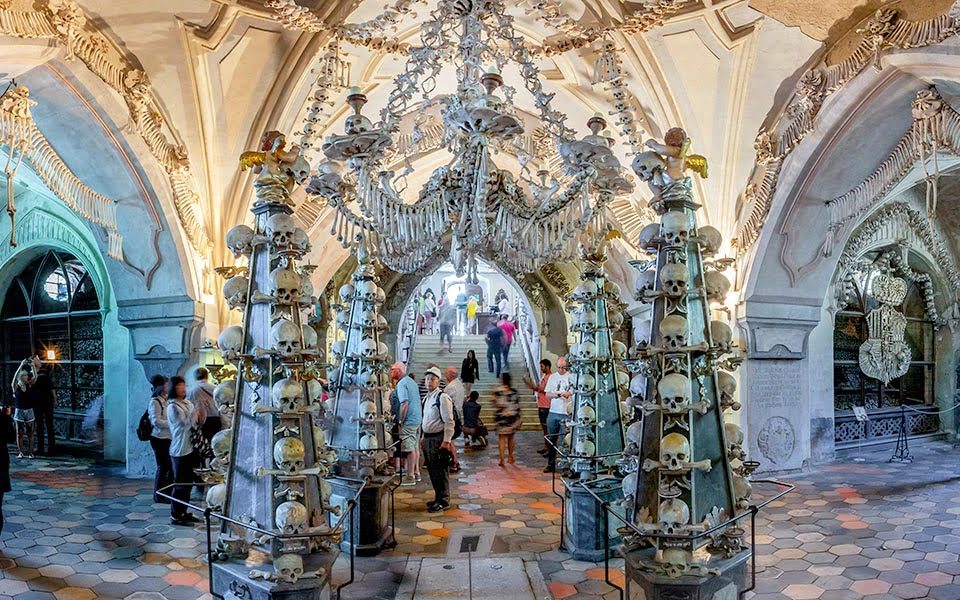
Take the 360 virtual tour of Sedlec Ossuary, Kutna Hora one of the UNESCO heritage places in the Czech Republic. Best place when traveling to Prague.
Sedlec Ossuary, Kutna Hora, Czech Republic
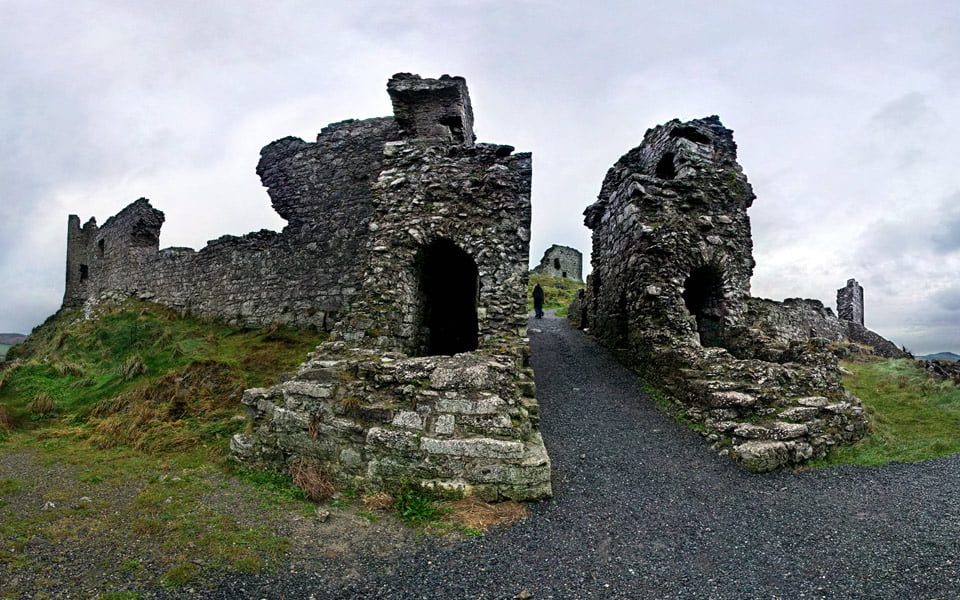
The 360 virtual tour of Dublin and Ireland's tourist places helps the online visitors to watch the beautiful places from anywhere and at any time.
Ireland 360° Virtual Reality
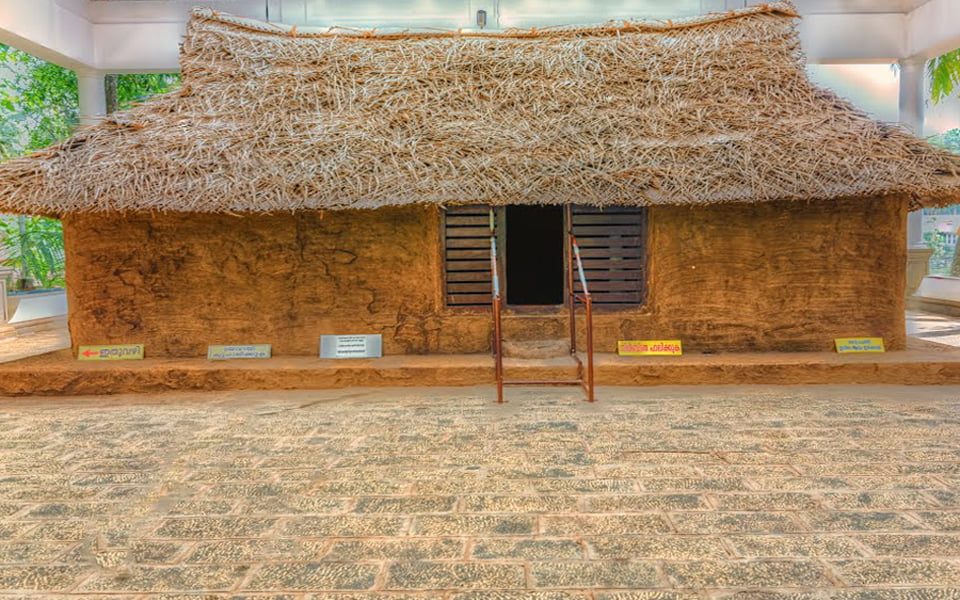
Take the 360 virtual tour of Sree Narayana Gurukulam online and explore the birthplace of Sri Narayana Guru from anywhere and at any time
Sree Narayana Gurukulam, Chempazhanthy
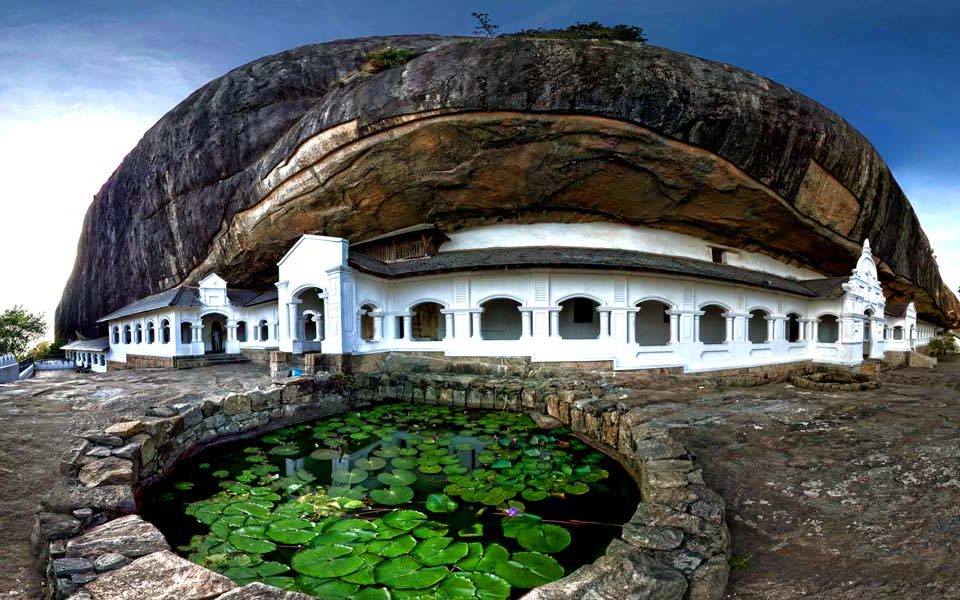
Take the 360 virtual tour of Dambulla cave temple, a Buddhist temple, online and explore this UNESCO heritage site in Sri Lanka from anywhere in the world.
Dambulla Cave Temple, Sri Lanka

Sign Up For Newsletter
© 2022 | p4panorma | Built By Jyothis Joy.

IMAGES
COMMENTS
Take a 360° self-guided virtual tour (external link opens in a new tab) Mapping the U.S. Latino Experience ... The National Museum of the American Latino is featuring an online virtual exhibit on the Healing Uvalde Mural Project. The Healing Uvalde Mural project is a collaboration with the Uvalde community, family members and artists to create ...
VIRTUAL TOUR 360. POLICIES AND PROCEDURES . the only Museum in the United States fully dedicated to modern and contemporary Latin American and Latino art. MUSEUM HOURS. Wed - Sun 11:00 a.m.-5:00 p.m. MOLAA is closed on Mondays & Tuesdays. Learn more CONTACT. MOLAA (562) 437-1689
Latino History is U.S. History. The contributions and experiences of Latinos in the United States are an essential part of our nation's history and culture. The National Museum of the American Latino will showcase the achievements and contributions of Latinos to American history. National Museum of the American Latino, 2023.
See the gallery in virtual space! Explore the "¡Presente!" exhibition in the Molina Family Latino Gallery as it looked when it first opened to the public. Since June 2022, we have rotated objects in the cases and welcomed visitors from across the United States and the world. Virtually experience for yourself "¡Presente!
The virtual tour is serene and high definition, let the screen pan and you will automatically go through the entire location; you can also view the murals in depth and be captivated by the details from the comfort of your home. Museum Website: Justo Sierra 16, Centro Histórico de la Cdad. de México, Centro, 06020 Ciudad de México, CDMX, Mexico
The museum provides resources and collaborates with other museums to expand scholarly research, public programs, digital content, collections and more. The museum operates its Molina Family Latino Gallery, the Smithsonian's first gallery dedicated to the Latino experience, at the National Museum of American History.
Virtual art museum tours in Mexico. Image: Instituto Nacional de Antropologia ... It was inaugurated in 1987 to expose the vestiges of the Mexica culture from pre-Hispanic to colonial times. The museum houses more than 14,000 objects found in excavations carried out between 1978 and 1982 on the site where the main temple of the Mexica people ...
Virtual Tour of The Mexican Museum. Get an inside look into the current location of The Mexican Museum at Fort Mason Center! The two exhibits featured here are Feldsott: Chants and Prayers and CultureStrike: Visions from the Inside. Please visit our website for more details, and visit us in the fall when our new exhibition is on view!
The Mexican Museum, initially located in the heart of San Francisco's Mission District, was founded in 1975 by San Francisco resident and artist Peter Rodríguez. The museum was the realization of Mr. Rodríguez's vision that an institution be created in the United States to exhibit the aesthetic expression of the Mexican and Mexican-American ...
Virtual Tour of the Prado National Museum. The Prado Museum in Madrid is the quintessential art gallery in Spain. With more than 200 years on its shoulders, it has one of the most complete collections in the world. Its works of art cover up to the end of the 19th century, with the works of Picasso traditionally reserved for the Reina Sofía.
Museo Frida Kahlo (Ciudad de México, México) The Frida Kahlo Museum offers a panoramic vivid virtual tour, which is teeming in blue, in a tour of her famous Blue House. Since Kahlo's paintings were influenced by her relationship with Diego Rivera, his work is also available in the digital exhibition. Furthermore, her recipes are posted in ...
We are dedicated to the preservation, promotion, and advancement of Hispanic culture, arts, and humanities. The Center presents exhibitions, lectures, book readings, performing arts, and educational programming that are meaningful to the local community. It offers the Hispanic, Chicano, and Latinx artist a place to present their work and bring ...
The Smithsonian is building the National Museum of the American Latino to recognize the accomplishments, history, and culture of the Latino communities. ... Take a virtual tour of the Molina Family Latino Gallery. Prado Museum. From The Hutchinson Unabridged Encyclopedia Spanish art gallery containing the national collection of pictures. The ...
Group Visits. Explore highlights of Hispanic Society's history, works on view, special exhibitions, and the Audubon Terrace variety of tours with Museum educators every Friday and Saturday at 2:00 p.m. Space is limited. Please register here. Read.
You'll hear more from us soon. In the meantime, explore the museum's inaugural exhibition, "¡Presente! A Latino History of the United States", online in three ways: take a virtual tour, explore key themes, or use an interactive map to learn more about the features in the Molina Family Latino Gallery.
Virtual Chicano/a Art, Movimiento y Más en Austen, Tejas 1960s to 1980s Apr. 8, 2022 - Aug. 21, 2022 This exhibition features artwork from Mexic-Arte's permanent collection and loans highlighting the rich and under told history of the Chicano Art movement in Austin from the 1960s to the 1980s.
Kick-off your Hispanic virtual field trip with Iguazú Falls, right on the border of Argentina and Brazil. It's a series of over 200 waterfalls making it one of the widest waterfalls in the world. In fact, they are double the size of Niagara Falls. It's an important landmark for the cities of Puerto Iguazú in Argentina and Foz de Iguazu in ...
To create, maintain, operate, and manage an Interactive Virtual Museum which would be the repository and showcase of the history of the Hispanic-Latin American community and its accomplishments and contributions to Canada. To gather, curate, archive, and display Presentially, Digitally, and Virtually all elements pertaining to the presence and ...
To continue our commemoration of Latinx/Hispanic Heritage Month, special guest, art historian, and educator, Valentín Concha-Núñez, will give our private school an interactive, virtual museum tour on Wednesday, October 14. We will explore "Representation of Latino Art" as Concha-Núñez presents several beautiful masterpieces created by ...
WALKING Outdoor Live Virtual Tour Live streamed by me from Moscow using live video-conferencing software. I invite you to explore the heart of the Russian capital - the legendary Kremlin fortress delivered personally and live by me using live video conferencing software & digital resources. The Kremlin is the origin of the Russian statehood.
Yuri Alekseyevich Gagarin was a Soviet pilot and cosmonaut. He was the first human to journey into outer space, when his Vostok spacecraft completed an orbit of the Earth on 12 April 1961. Created by Leen Thobias P4Panorama. Take the 360° virtual reality tour of Moscow City, Kremlin, Hall of Commanders, Red Square, Moscow River, Victory Park.
Museum for everybody" and The International Day of people with disabilities in Moscow zoo. ... Center for the reproduction of rare species of animals History Staff Contacts Articles FAQ Zoo video Press about us Virtual tour Independent evaluation Special assessment of working conditions Rules for the purchase and return of electronic tickets. ...
Virtual tours: Museum Online The virtual tours show the details of Skryabin's flat and relatively unknown exhibits of the composer's museum that are usually not included in sightseeing tours. Each tour is dedicated to one of the museum rooms — the study, the living room, the dining room, and the bedroom Watch → A.N. Skryabin. Musical ...